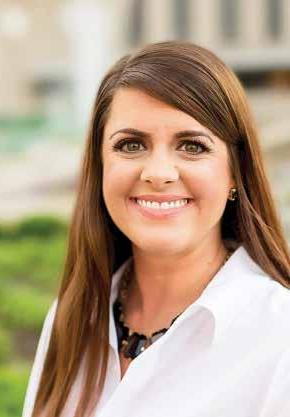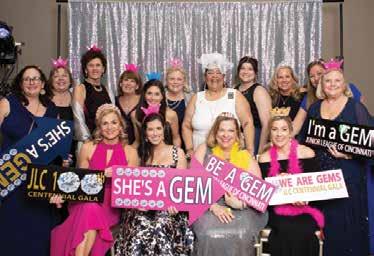
3 minute read
From the Archives: Kids On The Block
By: ELIZABETH LONGABERGER
The Junior League of Cincinnati became a program partner of Kids on the Block in 1986. Nearly a decade before, Kids on the Block was founded in Washington, D.C. as an initial effort to educate children about cerebral palsy. The program was started after the Education for All Handicapped Children Act, also known as the Mainstreaming Law, was passed. Over the past 43 years, the nonprofit organization has expanded its mission to include many disabilities and other differences. Today, Kids on the Block provides dynamic, interactive performances using life-size puppets to educate children about child abuse and neglect.
Advertisement
The League contributed an initial grant of $2,800 to start the program locally so the organization could purchase the puppets and copyrighted scripts. League members at the time actually presented the program to area school children. League Sustainer, Mary Lee Olinger, was very active in the initial launch of Kids on the Block, serving passionately as chairman of the program from 1986-87. Olinger shared in a 1986 Perspectives article that “...humor is very important. None of the puppets are depressed or afraid of what to say.” As the puppeteers answer these questions with humor and poise, it really helped to guide the young children on how to interact with classmates and peers with disabilities.
The League’s efforts provided a very important program delivering a vital message to children. For many years, the puppet shows included five of the same main characters across the world. These characters included Mark Riley, a twelve-year-old boy with cerebral palsy; Renaldo Rodrigeuz, who was almost totally blind; Mandy Puccini, a twelve-year-old girl without hearing; Stephen Arthurs, a nine-year-old physically abused child; and Stephen’s best friend, Nguyen Huy Nam, a Vietnamese boy who talked about being from a different culture. The shows included non-disabled children as well to show the children how to react in real scenarios.
Today, over 20,000 children a year engage with the puppeteers show. Jane Herms, the executive director of the Family Nurturing Center, a non-profit social service agency focusing on ending child abuse, shared that “the program includes different skits in which the puppets discuss their personal stories regarding both physical and sexual abuse.” There are three puppets, Stephen, Nam, and Joanne, who “dispel myths and provide nonthreatening, factual information.” The puppeteers are dressed in modern-day clothing and end the performance with a talk to the children, offering to answer questions and clarify any of the information. Kids on the Block is a very special, ongoing program that connects all people, including people with and without disabilities, the abused and the non-abused, and children and adults.
The League’s Centennial History Committee Co-Chair, Lisa Dye, recently found two Kids on the Block puppets that were straight from the manufacturer in New York City, brand new, and never before used. Lisa received permission from the League to offer the puppets to the local chapter of Kids on the Block. One of the puppeteers told Lisa that the organization was so excited because the puppets are so expensive to purchase. The puppets that Kids on the Block have been using have been mended and worked on many times, and the local chapter did not have enough funds in its budget for new puppets. Lisa mentioned that this donation was the most visibly rewarding out of all her archival work. She was so happy to see the puppets being put to great use for many more years to come!
JLC Building Supervisor, Anthony Gregory holds a puppet from the Kids on the Block Program at the Columbia Center.









